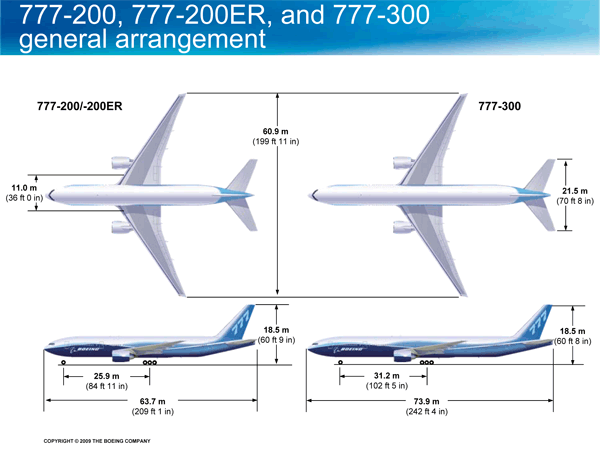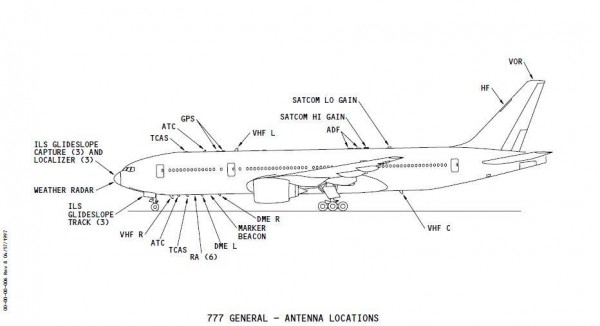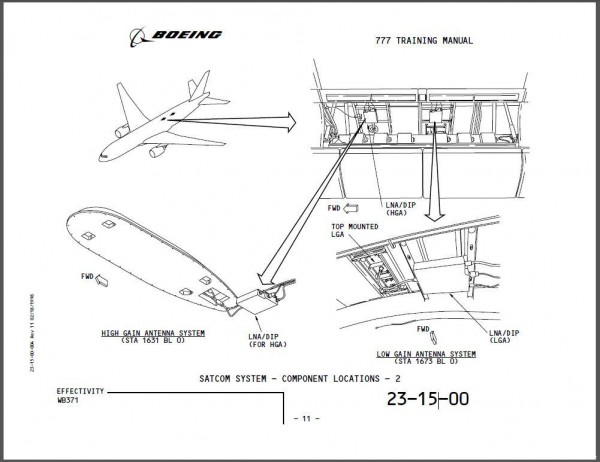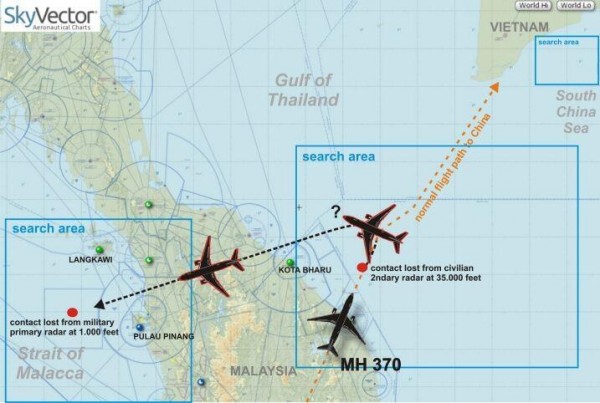[UPDATE: This theory may no longer be feasible as Boeing has confirmed that the MH370 777-200ER aircraft was not subject to the problems outlined in the Airworthiness Directive as it had a different layout from the 777 planes that were listed in the AD]
Its now closing in on 96 hours since flight MH370 disappeared without a trace. A lot has been speculated on what happened with the plane, from a terrorist plot to a mid air disintegration to the completely ridiculous transported to a different alien dimension. The authorities have been slowly revealing more information as the search continues and it is a lot easier now to discount certain scenarios that were being suggested earlier.
There are also a lot of rumours and theories floating around in cyberspace on what could have transpired. We have sifted through almost every possible theory and one seems to stand out. Our credit goes to the person who initially came up with this theory, and we have included all the recently updated information to it. We’re quite surprised that nobody has followed up on this.
On June 12th 2013, the Federal Aviation Administration (FAA) proposed an Airworthiness Directive (AD) for Boeing Airplanes, specifically the 777-200, -200LR, -300, -300ER and -777F. The proposed directive read.
SUMMARY: We propose to adopt a new airworthiness directive (AD) for certain The Boeing Company Model 777 airplanes. This proposed AD was prompted by a report of cracking in the fuselage skin underneath the satellite Communication (SATCOM) antenna adapter. This proposed AD would require repetitive inspections of the visible fuselage skin and doubler if installed, for cracking, corrosion, and any indication of contact of a certain fastener to a bonding jumper, and repair if necessary. We are proposing this AD to detect and correct cracking and corrosion in the fuselage skin, which could lead to rapid decompression and loss of structural integrity of the airplane.
The reason for the FAA to come up with this proposed AD was due to this
We received a report of cracking and corrosion in the fuselage skin underneath the SATCOM antenna adapter. During a maintenance planning data inspection, one operator reported a 16-inch crack under the 3-bay SATCOM antenna adapter plate in the crown skin of the fuselage on an airplane that was 14 years old with approximately 14,000 total flight cycles. Subsequent to this crack finding, the same operator inspected 42 other airplanes that are between 6 and 16 years old and found some local corrosion, but no other cracking. Cracking and corrosion in the fuselage skin, if not corrected, could lead to rapid decompression and loss of structural integrity of the airplane.
Source : www.ofr.gov [PDF]
The above AD was published for comments on the Federal Register Volume 78, Number 187 on the 26th of September 2013, and was subsequently approved on February 18th 2014. While this AD only applies to the 120 777 planes under the FAA, it isn’t hard to see why the same AD would not have to be applied to all Boeing 777’s currently in service. The 777-200ER MH370 is slightly older then the planes being used by the likes of American Airlines and United Airlines in the United States.
Now that could be a very critical clue. We’re now going to look at a few possible scenarios that might help in giving us more insights into what happened with MH370.
It isn’t known whether the FAA AD above was relayed to Boeing, and if Boeing relayed this information to all its customers around the world. Therefore we can’t speculate whether MH370 had any work done underneath its SATCOM antenna array. The antenna array and adapter is positioned on top of the fuselage. Two theories can be looked at here. It was not looked at since its not part of a routine maintenance, or it was looked at, and correctional work was undertaken. Based on the FAA directive however, it would take an estimated 36 working hours to correct the problem.
If MH370 did indeed have a cracking or corrosion on the top of its fuselage when it took off at 1240am, it would have been almost impossible to detect by the crew or the pilots. Depending on the level of corrosion, there would have been a gradual depressurization of of the cabin pressure as oxygen was sucked out of the aircraft. The gradual decompression would have not been noticed by the crew as pressure changes would have been at an acceptable level as the plane climbed to 35,000 ft. The slow drop in oxygen saturation as the plane climbed, as well as the effects of the lack of oxygen might have been brushed off by the pilots until it was too late. This lack of oxygen saturation would have already slightly disoriented the pilots, and as the plane climbed to 35,000ft, it is very possible that the cracks on the SATCOM antenna array might have snapped open and caused an explosive rapid decompression in the cabin pressure. Now the fuselage is still would have been intact, so there are two possible things that could have happened from here.
Firstly, the original theory was that the rapid loss of pressure at 35,000feet would have completely deprived the already disoriented pilots and passengers, and the plane would have continued on its autopilot course towards Beijing, and ended up crashing somewhere in Beijing. Now we have debunked this theory based on a few things. Firstly if the plane continued on auto-pilot at 35,000ft, it would have still appeared on ADS-B data, which it didn’t. It is also highly likely that if it continued on its route to Beijing, it would have run out fuel on land. Another issue would be that the plane would have continued to break apart if it had continued to fly at that altitude. The Kuala Lumpur Beijing route is also a very busy route and the 30,000 to 39,000 ft is a very busy bit of airspace and other planes would have noticed the stricken plane.
With the information we have gathered over the last few days however, we have arrived at another possible theory which would correlate with some of the information that has been released so far.
There would have been an explosive loss of pressure at 35,000ft when the SATCOM antenna array disintegrated. The pilots, while disoriented would have done two things, try to take the plane down to below 30,000 feet and try to turn around to the nearest airport for an emergency landing. This is corroborated by the turnaround statement that was tracked by the Military Radar. This also explains why sites like FlightRadar24 and Flightaware lost the flight at the Igari checkpoint. ADS-B isn’t able to track aircraft flying below 30,000ft, but the plane still would have appeared on DCA and Military radar.
Now, the explosion would have taken out the entire SATCOM antenna array, so if the pilots did indeed try to send out a distress call over their normal communications channels, it would not have gone through. However they might not have been aware that their SATCOM antenna array is gone. There could have switched to other communication channels (VHF etc), but they might have been either disoriented, or they just felt that all communications were down. Its hard to speculate their condition and if they were able to get their oxygen masks on in time. Hypoxia (due to the lack of oxygen) can set in very fast, impair cognitive functioning of the brain and incapacitate a person in a short amount of time. Passenger oxygen masks on the 777 do not deploy until cabin altitude exceeds approximately 13,500, and passengers were likely unconscious by that time if it was a slow decompression.
A similar condition was confirmed by the NTSB in the 1999 Lear Jet crash is South Dakota (via Wikipedia)
[A] possible explanation for the failure of the pilots to receive emergency oxygen is that their ability to think and act decisively was impaired because of hypoxia before they could don their oxygen masks. No definitive evidence exists that indicates the rate at which the accident flight lost its cabin pressure; therefore, the Safety Board evaluated conditions of both rapid and gradual depressurization.
If there had been a breach in the fuselage (even a small one that could not be visually detected by the in-flight observers) or a seal failure, the cabin could have depressurized gradually, rapidly, or even explosively. Research has shown that a period of as little as 8 seconds without supplemental oxygen following rapid depressurization to about 30,000 feet (9,100 m) may cause a drop in oxygen saturation that can significantly impair cognitive functioning and increase the amount of time required to complete complex tasks.
A more gradual decompression could have resulted from other possible causes, such as a smaller leak in the pressure vessel or a closed flow control valve. Safety Board testing determined that a closed flow control valve would cause complete depressurization to the airplane’s flight altitude over a period of several minutes. However, without supplemental oxygen, substantial adverse effects on cognitive and motor skills would have been expected soon after the first clear indication of decompression (the cabin altitude warning), when the cabin altitude reached 10,000 feet (3,000 m) (which could have occurred in about 30 seconds).
Investigations of other accidents in which flight crews attempted to diagnose a pressurization problem or initiate emergency pressurization instead of immediately donning oxygen masks following a cabin altitude alert have revealed that, even with a relatively gradual rate of depressurization, pilots have rapidly lost cognitive or motor abilities to effectively troubleshoot the problem or don their masks shortly thereafter. In this accident, the flight crew’s failure to obtain supplemental oxygen in time to avoid incapacitation could be explained by a delay in donning oxygen masks of only a few seconds in the case of an explosive or rapid decompression or a slightly longer delay in the case of a gradual decompression.
In summary, the Safety Board was unable to determine why the flight crew could not, or did not, receive supplemental oxygen in sufficient time and/or adequate concentration to avoid hypoxia and incapacitation.
The pilots could have tried to turn back and land at Kota Bahru Airport, but if they were incapacitated, they could have put the plane in autopilot or one of the autothrottle hold switches and hope they would recover and then take control of the plane. This would corroborate with the story of the pilot enroute to Narita who tried to contact the plane on all channels, and only receive faint mumbling from either the pilot or the co-pilot. I don’t see any reason why a pilot would lie to the media under circumstances like this. There were also a number of reports from people who claimed to have seen a low flying aircraft across places in Kelantan, some claiming that its tail wing was on fire at around 2am.
If the plane was indeed on autopilot, it would also corroborate the latest evidence that it was last seen in the vicinity of Pulau Perak on the west coast before disappearing. The plane had enough fuel to continue flying on autopilot deep into the Indian Ocean. This would be quite similar to what happened with Helios Flight 522 on 29th December 1997 14 August 2005 when flight crew failed to react to pressure warnings. [via Wikipedia]
Another critical clue to support this theory is in the phone calls by family members to the passengers of flight MH370. There was a lot of claims by family members that they were able to call the passengers onboard MH370, hours after it had mysteriously disappeared. Malaysian Airlines 777-200 planes are supposed to be equipped with ACN’s Aeromobile roaming service. This service would have allowed passengers to make and receive calls on their handphones during the flight. The following list at ACN’s page was last updated in March 2009, so we can’t confirm if MH370 had this system on board.
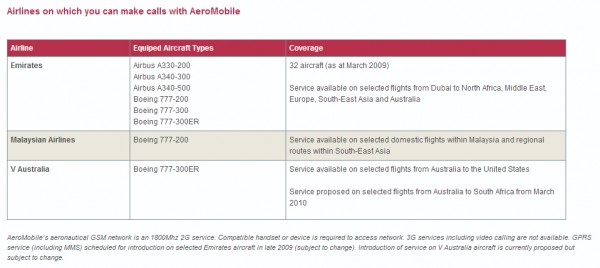 If it did, it would support the theory on two fronts. Firstly, the passengers had all passed out unknowingly due to the gradual decompression and lack of oxygen so much so they were never able to make any distress calls. Since it was theoretically possible for the plane to continue flying on autopilot hours into its disappearance until it ran out of fuel (and possibly glide a further distance), it would be a fair assumption to say that calls being made to the phones were actually going through, just that nobody would have answered. [Link: ACN Aeromobile Roaming]
If it did, it would support the theory on two fronts. Firstly, the passengers had all passed out unknowingly due to the gradual decompression and lack of oxygen so much so they were never able to make any distress calls. Since it was theoretically possible for the plane to continue flying on autopilot hours into its disappearance until it ran out of fuel (and possibly glide a further distance), it would be a fair assumption to say that calls being made to the phones were actually going through, just that nobody would have answered. [Link: ACN Aeromobile Roaming]
[Note: This article will be updated as we get more information and try to understand what happened to flight MH370]
Original credit source : http://mh370lost.tumblr.com/?og=1
Follow us on Instagram, Facebook, Twitter or Telegram for more updates and breaking news.


